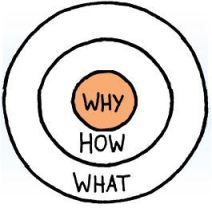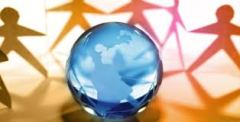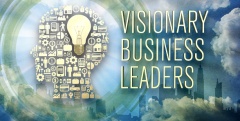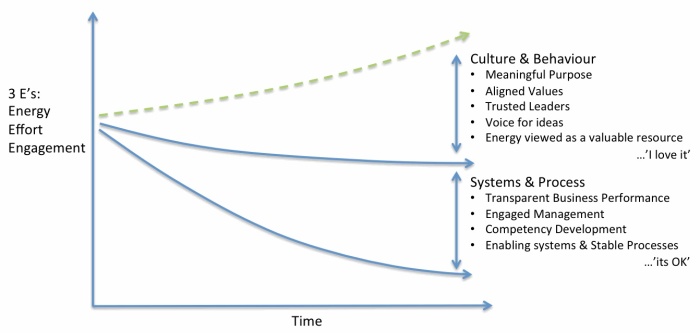The Three E’s Model of Neuroleadership: Energy, Effort and Engagement
This week, Adair Jones, a Brainwaves for Leaders staff writer, investigates how leaders can direct energy, effort, and engagement by connecting employees with intrinsic values and meaningful purpose.
_____________________________________________
In his book Start with Why, Simon Sinek presents The Golden Circle model, which he convincingly argues “codifies the three distinct and interdependent elements (Why, How, What) that makes any person or organisation function at its highest ability.” Sinek bases his ideas on the biology of human decision-making and explains, “The function of our limbic brain and the neocortex directly relate to the way in which people interact with each other and with organisations and brands in the formation of cultures and communities.”
The critical importance of cultures and communities is central to a new area of neuroscience led by Marco Iacoboni, who a few years ago accidentally discovered mirror neurons, a new class of brain cells that “map one person’s actions into another’s brain”—in other words, brain cells that serve as the “neural basis of empathy”. Iacoboni will give the keynote address in June’s NexusEQ Conference at Harvard. In his address, he will discuss how imagination and empathy are “the doorways to personal—and therefore societal—transformation”.
In a recent article for Forbes, Joshua Freedman, the chief operating officer of Six Seconds, The Emotional Intelligence Network and a change leader teaching the skills of emotional intelligence around the globe, writes:
One of the central challenges in learning and leading is the ability for people to connect, to collaborate, and to find the common ground needed to work out the intense polarizations that lead to so many of the terrible headlines we see. While humans have a fierce independence, we are actually social animals, and mirror neurons are evidence of this interdependence.
Writing about conscious capitalism in the Harvard Business Review, Tony Schwartz, the president and CEO of The Energy Project, takes these ideas a step further. He argues that, at the most basic level, consciousness simply means being ‘conscious of more’, something that begins with self-awareness and the willingness to take responsibility for our actions. Additionally, Schwartz asserts that “consciousness is also about being socially conscious—recognising and taking responsibility for the needs of the larger community”. Ultimately, he says,
it’s not necessary to choose up sides between consciousness and capitalism, self-interest and the broader interest, or personal development and service to others. Rather, they’re each inextricably connected, and they all serve one another.
Linda Ray and Geoff Grahl at NeuroCapability have combined Schwartz’s ideas about conscious capitalism with Iacobani’s discovery of mirror neurons, focusing specifically on the implications this discovery has for the central role emotional intelligence plays in our relationships—both personal and professional. They’ve devised a model known as “The Three E’s—Energy, Effort & Engagement”, a tool that can be used both to evaluate an organisation’s current state and to establish the direction of its future state.
Motivated by recent research that found that most leaders and employees are bombarded with sky-rocketing pressures in our increasingly ‘hyperkinetic work environment’, Ray and Grahl examined the effects this kind of overload is having on employee happiness. In many organisations, because of the stresses and uncertainty of the Global Financial Crisis, employees are increasingly seen as commodities with an endless supply of energy. Even when common sense tells us this is not true, employees are still asked to do more with fewer resources.
Ray says it’s our organisational leaders who set the engagement climate, and they also set levels of energy depletion and energy restoration. It’s a delicate balancing act, and one that’s difficult to acheive. A 2012 Gallup study estimates that worker disengagement accounts for more than $300 billion annually in lost productivity in the U.S. alone. In Australia, a recent survey by AON Hewitt examined workplaces in which managers were required to compete on how well they engage staff, along with the traditional metrics. These managers were forced to reverse the current course of short-term employment, requiring them to foster bottom-up innovation and collaboration—the best long-term economic drivers of any business. The results were startling.
According to Jackson Hewett in an article for Business Spectator, one of these companies, Atlassian has a staff engagement level of 87 per cent compared to an Australian average of 54 per cent, a significant reward for its dedication to employee ‘happiness’. Atlassian uses this engagement to drive innovation. Every quarter, they give staff time to create their own teams and to experiment with new ideas. The result? They’ve launched nearly 50 product extensions, the very innovations that have helped them “grow from two blokes in a garage 10 years ago, to a company with 18,000 customers and $100 million in revenue today”.
Ray and Grahl understand that streamlining systems and processes is not enough to drive innovation. Even an engaged management yields modest results. They investigated what it was that created the difference between employees who replied “It’s okay” when asked about their jobs and those who said “I love it!”. They discovered that the workplaces that viewed energy as a valuable resource had an edge. They also learned that employees who felt they had a voice and an opportunity to explore new ideas were more engaged and reported greater happiness. Trustworthy leaders and managers also scored high on the list. However, most of this was to be expected. What was really interesting in their investigation was the alignment of employee and company values and the sense of meaningful purpose—being part of something that made a difference for others—emerged as the two most significant factors in workplace engagement. While this may seem counter-intuitive on the surface, it echoes Schwartz’s thinking about conscious capitalism.
The Three E’s Model: Energy, Effort, Engagement
The beauty of The Three E’s Model is that it aligns with Sinek’s simple and elegant Golden Circle concept. Employees need to know not only what they are doing and how they are going to do it but why it matters. They need to feel intimately connected both to organisational processes and to the purpose of their daily effort. The leaders with enough clarity and consciousness to be able to effectively communicate this stand to gain a workforce that is not only engaged and innovative but also happy–no small accomplishment, but a hugely valuable one.
_____________________________________________
For anyone who hasn’t heard Simon Sinek’s TED Talk on the golden circle, it’s not to be missed. We welcome your comments on how you are finding your “why” and utilising The Three E’s in order to lead your organisation.
Read the story about Atlassian’s Happiness Metre.
_____________________________________________
.
.
Adair Jones is a writing and communications expert with 20 years experience in a wide variety of content production. She has worked as a technical writer for industry, produced government tenders, and created promotional materials for clients across all sectors. As a journalist, Adair contributes regularly to newspapers, magazines and online journals. In addition, she has experience in academic and creative writing and editing. She possesses a fascination for the human brain in all its manifold aspects.
.
.
.






Nicely written. Your thoughts and expansion of ideas can do nothing but enhance the business environment by those who are savvy enough to peruse these articles. Thanks.
Diane Adair Montalbano
May 31, 2013
[…] This week, Adair Jones, a Brainwaves for Leaders staff writer, investigates how leaders can direct energy, effort, and engagement by connecting employees with intrinsic values and meaningful purpos… […]
The Three E's Model of Neuroleadership: Energy,...
May 31, 2013
Thank you Adair for this meaningful post and in particular to let me know the “The Atlassian happiness meter”!
ivangruer
June 4, 2013
[…] feeds energy rather than depleting it (supporting the 3Es model of energy, effort and engagement) […]
Ditching the boss: How the collective brain empowers organisations | Brainwaves For Leaders
January 10, 2014
[…] feeds energy rather than depleting it (supporting the 3Es model of energy, effort and engagement) […]
Ditching the boss: How the collective brain empowers organisations | Body Language
January 14, 2014
Thanks for sharing! Check out more of what we do at neuresource.com.au.
NeuroCapability
January 17, 2014
[…] MORE—> […]
Top posts: the ways neuroscience will transform how you work | Brainwaves For Leaders
January 30, 2014